 The Del Corazon Festival at Pilsen’s National Museum of Mexican Art will include culinary arts, films and literature — “a ‘probadita,’ a little bit of everything.”
The Del Corazon Festival at Pilsen’s National Museum of Mexican Art will include culinary arts, films and literature — “a ‘probadita,’ a little bit of everything.”
The festival, scheduled to start in late August, will be curated by Jorge Valdivia, director of performing arts at the museum. Valdivia said he is particularly excited about the festival, adding that it was appropriately titled, “Del Corazon, from the heart.”
The festival was established as a performing arts festival, but has been redefined as a multidisciplinary festival.
“I didn’t want to limit the festival to just dance, music and theater,” said Valdivia. “I wanted a festival that can embrace film, literature and culinary arts.”
Valdivia, who has worked at the museum for 17 years, said, “We live in an era where there are foodies everywhere, people sharing recipes through social media. Look at food porn, people are taking pictures of their food and sharing it. There is a curiosity. The gastronomy, culinary art is a very important, integral part of our Mexican culture, our Mexican heritage.”
Valdivia pointed to the many different influences including the pre-Cuauhtémoc type of cuisine. “We have recipes by some famous figures like Sor Juana [a well-known nun] who had a recipe book and [painter] Frida Kahlo. I think there is a story to be told through culinary art as well.”
“I think you can take people on a tour of Mexico through dance, rhythm and music and I think you can do the same thing through recipes, through taste and smell,” said Valdivia.
The National Museum of Mexican Art has been open for 26 years. It offers free admission. According to its website, the museum is committed to remaining free and accessible to individuals from all backgrounds. It’s the only major museum in Chicago that is free to the public.
“The NMMA is one of the premier repositories for Mexican art in the nation, and its permanent collection contains over 7,000 objects — making it one of the largest collections in the nation,” its website reads.
The museum has a very clear mission: to try to cultivate a deeper appreciation of Mexican artists. “For us, ‘Mexican’ is a no boundaries type of definition. This means Mexicans from Mexico, Mexican Americans and so forth,” said Valdivia.
He said the museum has had a significant economic impact on Pilsen. “The museum brings in tourism, and a lot of the local businesses reap the benefits of the tourism that comes into Pilsen,” he added.
Valdivia said the museum brought other changes with it. “Other small galleries popped up. A culture was established.”
The NMMA receives more than 160,000 visitors annually from around the world, according to the museum’s website.
Valdivia said the museum led the way and was a trailblazer in establishing a “young Latino Mexican community, deeply rooted in the arts and that wanted art that represented their culture.” Valdivia said other galleries followed along with art walks.
The museum features local and also international artists. “We showcase artists of all different levels: artists who reside in Mexico, artists who perhaps live in California or Texas, even New York. Artists from all over the place. That’s a reflection of the diaspora of our culture. Jokingly we’ve said many times that we are everywhere, but the truth is that the Mexican diaspora can be traced not only from Mexico to the U.S. but to all parts of the world.”
Valdivia says Pilsen has changed dramatically since he first arrived there. “The increased tourism coming to Pilsen has changed the mindset of those who live outside of Pilsen. Suddenly Pilsen became this hip place to come visit.”
Valdivia said the area is not as diverse as people like to believe. “At one point it was Mexican, now it’s getting ‘White.’ There are not many African Americans or Asians. Using the term that it’s becoming a much more diverse community is misleading. It’s either, or.”
Valdivia attributes the changes in the community to the price of living. “It’s relatively cheaper compared to living in Wicker Park or Bucktown. It’s close in proximity to downtown and the Loop and closer to major universities. A lot of students have moved here.”
Valdivia said the development is targeted to a specific income bracket. “Money talks, and people with money have one interest in mind — that’s to make an investment. It’s elitist and it’s classist and it’s done knowing that this will drive out certain people that cannot afford that. That’s the down side, but we are still here.”
Valdivia said the neighborhood is relatively safe. “Going to different neighborhoods, you just have to be savvy and know that you are a visitor.”
As far as future plans for the museum, Valdivia said that a lot of institutions and nonprofit cultural organizations are living in a tough economic climate. “It’s been more challenging than it’s been in the last couple years. We are trying to keep on keeping on,” said Valdivia. “The future for me, as the director of performing arts, is to continue to provide quality programing for the community. I want to represent my community as best as I can through the programming that I offer. I want the audience to feel respected, represented and loved through what I’ve chosen to represent our culture on stage.”
Maria Estanslao has worked at the museum’s gift shop, Tienda Tzintzuntzan, for six years. She says the visitors of the museum have changed over the years. “People are visiting us from different countries, different states but I’ve also seen more Latino families.”
She said her favorite event is the annual “Day of the Dead Exhibit.” Estanslao said this brings families together to live a tradition, make sugar skulls and learn from the culture.
Estanslao moved to Pilsen three years ago; she said the community has been through positive changes and that the neighborhood is safe. “I’ve been out after 7 p.m. and I always feel safe.”
Lucia Calderon, 17, was one of the many students visiting the museum on a recent day. She lives in Indiana but is familiar with the museum. “I like the colorful paintings, and how everything relates to our traditions,” she said.
Ana Gonzalez, who lives in the Back of the Yards neighborhood, brings her 4-year-old son to the museum. “Children nowadays only see the American side of their culture. The museum shows them their heritage and where they came from.”
Rebekah Smith, 17, also from Indiana, said it was her first visit to the museum. She said she would recommend it to her family and friends.
On Dec. 5, 2006 the former Mexican Fine Arts Center Museum changed its name to the National Museum of Mexican Art in recognition of its 20th Anniversary and its status as the largest and leading Mexican cultural institution in the U.S.



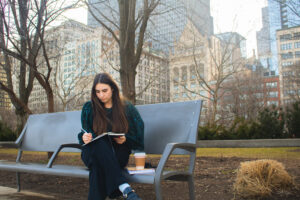
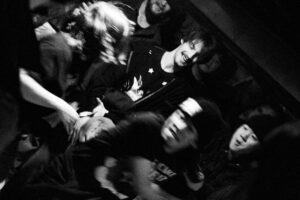
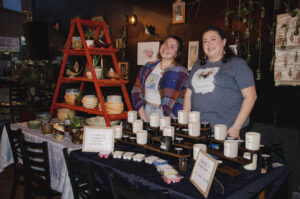
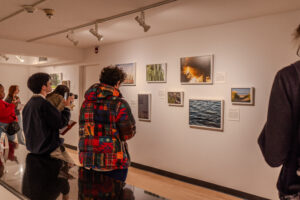



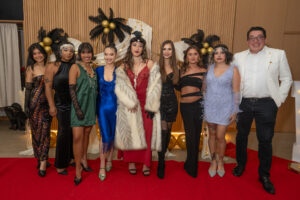


Be First to Comment